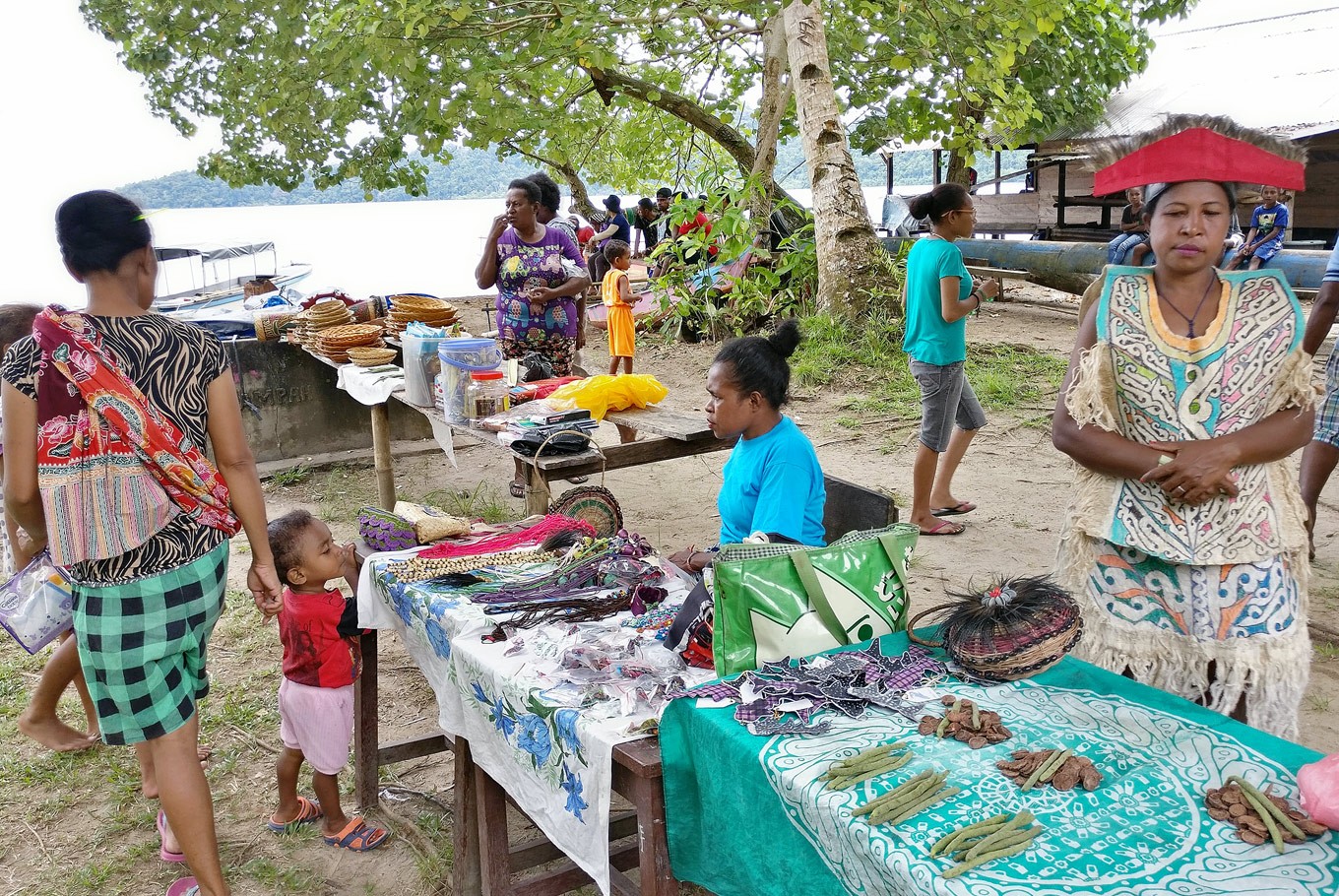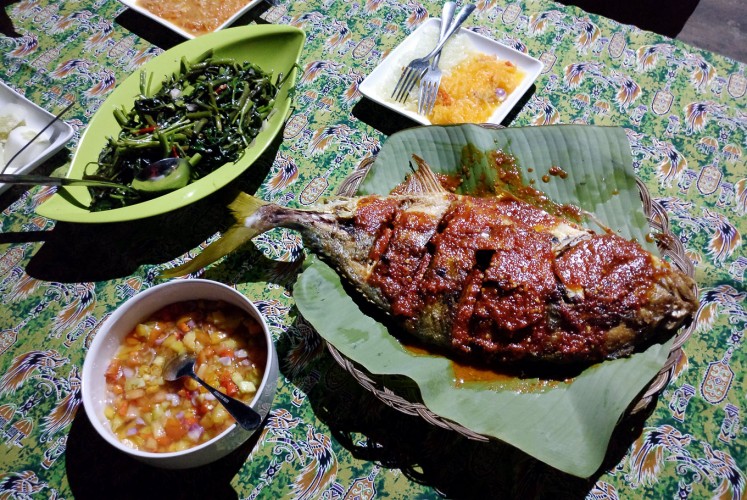Popular Reads
Top Results
Can't find what you're looking for?
View all search resultsPopular Reads
Top Results
Can't find what you're looking for?
View all search resultsAkudiomi at a crossroads
Change text size
Gift Premium Articles
to Anyone
T
wo worlds coexist and collide in Akudiomi, a 246-square-kilometer customary village and its nine clan territories including Kali Lemon in Cendrawasih Bay National Park’s sub-region one, known for its fledging, increasingly popular whale shark tourism in Nabire, Papua.
The impression resulted from a recent visit there with a team from the Environment and Forestry Ministry.
The first world feeds on provisioning by nature’s abundant resources as reflected in their relatively pristine, unpolluted lands and waters that enable self-sufficiency and a relatively care-free lifestyle. The second world feeds on capitalism and the trappings of modern life that create dependency on outsiders who bring money, jobs and opportunities.
Being remote, sparsely populated (1,343 in 2013) and off the grid with limited electricity supplied by diesel generators, a lack of mobile phone network internet connection prevents the first from being fully integrated into the second, resulting in a strange hybrid of traditional and modern life.
The ornamental wooden oars Akudiomians sell to tourists are colored with Stabilo Boss highlighters instead of natural dyes.
They use cellular phones mostly for listening to music and taking photos. They make or receive calls only when they are in the nearest city of Nabire, about one and half hours away by speedboat in good weather or two hours by land and sea combined.
There are shops selling candy, instant coffee sachets and packed snack items they source from Nabire, where they buy the diesel on which their boats and power generators run.
It is perhaps only that much from the trickle-down effect they get from the park’s top attraction: bagan (lifting net fishing platform) based whale shark tourism where another two worlds coexist and collide.
The first is the sea world down below where getting approached by the world’s largest fish is both terrifying and thrilling, and success is measured by the number of sharks one encounters while swimming or diving and the Instagram-worthy photos one manages to take while underwater with them.
Great food: Grilled fish, stir-fried kangkung (water spinach) and a chili tomato condiment is served at Kali Lemon Dive Resort. (JP/Arif Suryobuwono)The second is the bagan world up above where employed fishermen lead a subsistence lifestyle and success is measured by the catch sold and the frequency of tourist visits.
Mutualism connects both. Those operating the bagan feed the sharks with ikan puri (silvery baitfish) to ensure site fidelity and in so doing earn money from tourists attracted to their bagan to interact with the sharks.
The potential downside of such symbiosis is sharks’ vulnerability to getting tangled up in their nets and dependency on provisioning in latter stages of their life.
“Tourists visit the whale shark-feeding bagan almost every day, about 15 times a week, especially on the weekend,” said Kali Lemon Dive Resort operator Bram Maruanaya.
Cendrawasih Bay whale sharks started to attract tourists after a Mission Aviation Fellowship pilot came to the bay and swam with the sharks in 2000, said Bram, who opened Kali Lemon Dive Resort in 2011, a year after authorities officially allowed tourists to interact with the sharks.
Since then, tourists have started to come there to swim with the filter feeders whose length, according to Bram, based on his encounters with them while diving, ranges from 80 centimeters (new born juveniles) to 15 meters and whose weight may reach more than 2,268 kilograms.
The other alternative to bagan-based whale shark tourism is reliance on opportunistic sightings of non-provisioned animals.
“Even in waters where no bagan is, many can be found when open ocean currents flow into Cendrawasih Bay, especially in November,” said Bram.
Recent internal conflicts among Akudiomians that led to most bagans being banned from Akudiomian waters have prompted the Nabire government to construct floating posts that would eventually replace bagans as whale shark interaction points. One such post was officiated last November.
At the time of writing, however, “the post has not been fully functional and the eight bagans at Akudiomi and neighboring Yaur waters are still operating,” said Bram, indicating another two worlds at odds.
As the popularity of Cendrawasih Bay National Park as a tourist destination pushes the area closer to the center of the world’s whale shark tourist industry, onslaughts of modernity and its concomitant noise, chemicals, pollution, a faster pace of life and stress, in the name of progress and development, will eventually roll all these two worlds into one, usually at the expense of the first.








